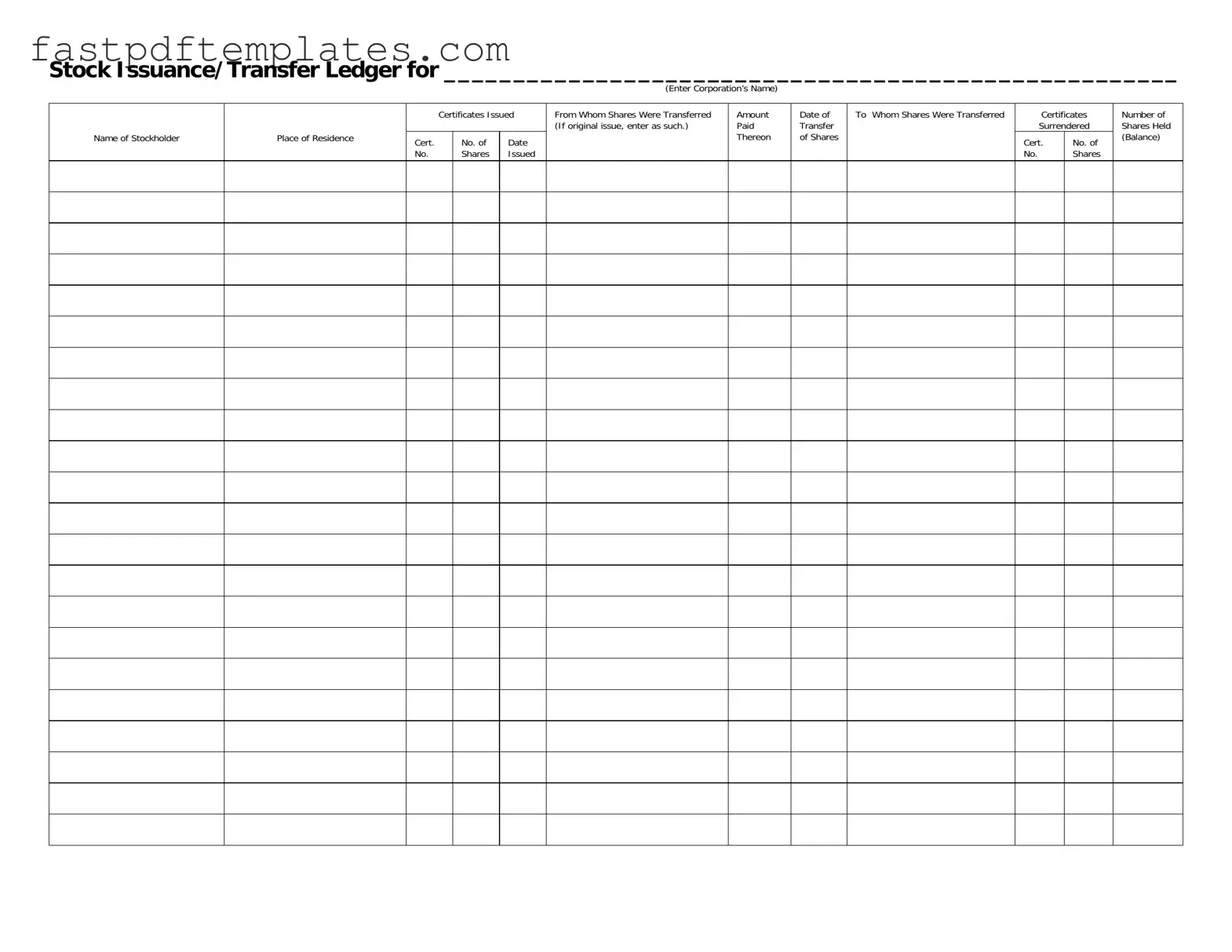Blank Stock Transfer Ledger Form
The Stock Transfer Ledger form is a crucial document used to record the issuance and transfer of shares in a corporation. It captures essential details such as the stockholder's name, the number of shares issued, and the dates of transfer. Maintaining an accurate ledger helps ensure transparency and compliance in corporate governance.
Access Document

